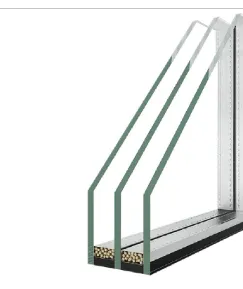

In the realm of modern architecture, low e glass has redefined how buildings interact with light and temperature. From low e rated windows that transform energy consumption to low e replacement glass for retrofits, and the safety - focused low e safety glass, each variant addresses specific needs. Additionally, low e sc glass (solar control) and low e soft coat glass offer specialized performance, making low e technology a cornerstone of sustainable design. Let’s explore these innovations and their impact on contemporary construction.

Low e rated windows are engineered to meet strict energy efficiency standards, providing quantifiable thermal performance for homes and commercial spaces. These windows feature low - emissivity coatings that reflect infrared light, reducing heat transfer by up to 50% compared to standard glass. In cold climates, low e rated windows trap interior heat, cutting heating costs, while in warm regions, they block solar radiation to minimize air - conditioning loads. Certification bodies like ENERGY STAR® validate their performance, ensuring homeowners and developers can trust their energy - saving claims. For example, a home with low e rated windows in Minneapolis might save $500 annually on heating, while a Miami office building could reduce cooling costs by 30%. The ratings consider factors like U - factor (heat transfer) and solar heat gain coefficient (SHGC), allowing precise matching to regional climate needs.
Low e replacement glass offers a cost - effective way to upgrade existing windows without full replacement, making it ideal for historic homes or budget - conscious renovations. This glass integrates low - emissivity coatings into custom - cut panes, fitting seamlessly into older frames. Homeowners often choose low e replacement glass to improve comfort—eliminating drafts and reducing condensation on windows—while commercial properties use it to meet energy codes. For instance, a 1950s apartment building in Chicago could replace single - pane windows with low e replacement glass, transforming them into energy - efficient double glazings. The process involves measuring existing frames, selecting the right low e variant (soft coat for maximum efficiency or hard coat for durability), and installing the new glass with insulated spacers. This approach saves up to 25% on energy bills while preserving architectural integrity.
Low e safety glass prioritizes both energy performance and occupant safety, combining low - emissivity coatings with impact - resistant technologies. This glass is mandatory in high - risk areas like balconies, stairwells, or hurricane - prone regions. Tempered low e safety glass undergoes heat treatment to increase strength, shattering into harmless pieces if broken, while laminated variants sandwich a plastic interlayer to prevent shards from falling. In commercial buildings, low e safety glass meets codes for fire-rated partitions, maintaining energy efficiency while providing fire resistance. For coastal homes, hurricane - rated low e safety glass withstands 140 mph winds and flying debris, all while reducing heat transfer. The dual functionality makes it a staple in schools, hospitals, and public spaces where safety and sustainability coexist.
Low E SC Glass (solar control) is optimized to balance light transmission with heat rejection, ideal for sunny climates. The "SC" designation denotes its ability to block solar infrared radiation while allowing visible light to enter. This glass uses advanced sputtering to deposit silver - based coatings that achieve a low SHGC (typically <0.30), reducing summer heat gain without darkening interiors. In Phoenix, a home with low e sc glass could keep indoor temperatures 5–7°F cooler than standard low e glass, while a Los Angeles office building might maintain 70% natural light with minimal glare. The technology is also used in skylights and atriums, where unfiltered sunlight causes overheating. Some low e sc glass variants incorporate UV inhibitors to protect furniture and artwork from fading, making them popular in museums or retail spaces.
Low E Soft Coat Glass delivers the highest level of thermal insulation in the low e family, thanks to its thin, multi - layer sputtered coating. Unlike hard coat variants (applied at high temperatures), soft coat layers are delicate and must be sealed within double glazing, facing the air gap. This design achieves U - factors as low as 0.15 BTU/hr·ft²·°F, ideal for passive houses or net - zero energy buildings. In Stockholm, a passive house with low e soft coat glass might require no active heating, while a Toronto office tower could reduce its carbon footprint by 40%. The coating's nanoscale silver layers reflect both interior heat (in winter) and solar radiation (in summer), creating a thermal barrier. Though more expensive than hard coat options, low e soft coat glass pays for itself in energy savings within 3–5 years for commercial projects.
Yes, low e safety glass (tempered or laminated) is ideal for shower enclosures:
By integrating low e rated windows, replacement glass, safety glass, SC glass, and soft coat glass into projects, architects and builders can achieve unprecedented energy savings, safety, and comfort. Whether retrofitting an old home or constructing a cutting - edge commercial space, low e technology offers tailored solutions for every efficiency goal.